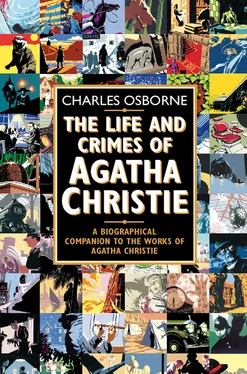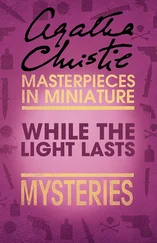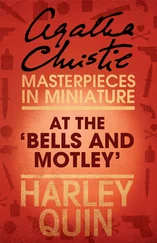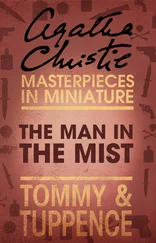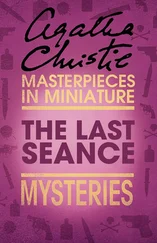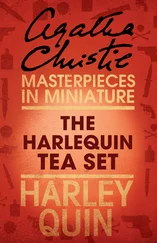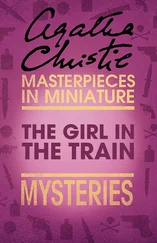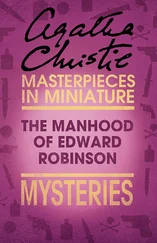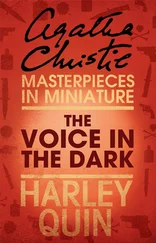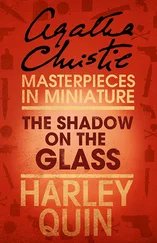At the end of The Big Four, at least three of the four are dead. But a slight doubt remains about number four, the Englishman who is a master of disguise and who has played a number of roles throughout the novel. His body has been found, but the head was blown to pieces and it is just possible that the real Number Four has escaped again. Poirot cannot be absolutely certain, but he thinks that he has routed the Big Four, and that he can now retire, having solved the greatest case of his life, after which anything else will seem tame. Perhaps he will grow vegetable marrows, he says. And Hastings will return to his charming wife in the Argentine. So we should assume that the events in The Big Four have occurred before those in The Murder of Roger Ackroyd, which began with Poirot already in retirement and attempting to grow his marrows.
Though it is entertaining to read, and moves swiftly, The Big Four can hardly be counted among Agatha Christie’s more successful works. Poirot in The Big Four is, like Falstaff in The Merry Wives of Windsor, shabbily treated by his creator. Two of the novel’s characters, the Countess Rossakoff and Joseph Aarons, are to be met in other Poirot adventures. Aarons, the theatrical agent and friend of Poirot (it is reassuring to know that Poirot has at least one Jewish friend) has already helped the detective in The Murder on the Links and will do so again in The Mystery of the Blue Train, while the Countess Rossakoff, a flamboyant and exotic Russian beauty who gains Poirot’s respect and even affection, remains an acquaintance for many years, appearing in two short stories, ‘The Double Clue’ in which Poirot first meets her (1925, but not collected in a volume until 1961) and ‘The Capture of Cerberus’ in The Labours of Hercules (1947).
‘Those who come to expect subtlety as well as sensation in Mrs Christie’s writing will be disappointed,’ said the Daily Mail of The Big Four, and this seems to have been the general opinion. Nevertheless, this hastily assembled ‘novel’ managed to sell more than 8,500 copies of its first edition. There can be little doubt that the publicity surrounding its author’s disappearance a couple of months earlier was largely responsible for the increased sales.
The Mystery of the Blue Train POIROT (1928)
In February, 1928, Agatha Christie took her daughter Rosalind for a holiday to the Canary Islands, and while they were there she managed to finish another novel, The Mystery of the Blue Train. She did not enjoy writing it, and persevered only because of the contractual obligation to her publisher and the need to continue to earn money. She had worked out what she referred to as a conventional plot, based on one of her short stories, ‘The Plymouth Express’; but, although she had planned the general direction of the story, both the scene and the characters resolutely refused to come alive for her. She plodded on, recalling later that this was the moment when she ceased to be an amateur and became a professional writer.
If one differentiates between amateur and professional (writer, actor, musician) on the basis that the professional can do it even when he does not feel like it, while the amateur cannot even when he does, then undoubtedly Mrs Christie was now justified in admitting herself to the professional ranks, for although she did not much like what she was writing and did not think she was writing particularly well (in fact, she later referred to The Mystery of the Blue Train as easily the worst book she ever wrote), she nevertheless finished it and sent it off to Collins. It immediately sold a healthy 7,000 copies, which pleased her, although she could not feel proud of her achievement.
Mrs Christie was granted a divorce from her husband in April, 1928, on the grounds of his adultery not with Nancy Neele but with an unknown woman in a London hotel room. This particular act of adultery was purely formal, if it took place at all: in those days, when both parties to a marriage wanted a quick divorce the only course open to them was for one of them to stage-manage an act of infidelity and to arrange for circumstantial evidence to be provided by ‘witnesses’. (As soon as the divorce became absolute, Christie married Nancy Neele. They remained married until Nancy died of cancer in 1958. Archibald Christie died in 1962.)
After the divorce, Agatha Christie wished to discontinue using her former husband’s name, and suggested to her publishers that she should write her novels under a male pseudonym. However, she was persuaded that her public had become used to her as Agatha Christie and that it would be unwise for her to change her name. So she remained Agatha Christie to her readers, for the rest of her life.
Though it is far from being one of her more brilliant efforts, and is distinctly inferior to The Murder of Roger Ackroyd, The Mystery of the Blue Train does not deserve the scorn which its author liked to pour upon it. It is, at least, an improvement upon its immediate predecessor, The Big Tour, although, like The Big Four, it uneasily combines domestic murder with international crime. In solving the former, Poirot manages also to put a stop to the latter. One marvels at Agatha Christie’s objectivity as a writer. There is little trace in The Mystery of the Blue Train either of the emotional turmoil which its author had recently undergone or of the reluctance with which she claims to have written it.
The daughter of an American millionaire is found strangled in her compartment on the famous Paris-Nice train bleu when it pulls into Nice, and a fabulous ruby, the ‘Heart of Fire’, which her father had recently given her, is discovered to have been stolen. The plot is an expansion of a short story, ‘The Plymouth Express’ in which the theft and murder take place on a less glamorous train, the 12.14 from Paddington, and are very swiftly solved by Poirot. ‘The Plymouth Express’ did not appear in a volume of Agatha Christie stories until 1951 when it was included with eight other stories in The Under Dog, published in the United States. This volume was not published in Great Britain, and it was not until 1974 that British readers found ‘The Plymouth Express’ collected in a volume entitled Poirot’s Early Cases (called Hercule Poirot’s Early Cases in the United States).
In its expansion into a full-length novel, Mrs Christie’s story acquired subplots and a great many more characters. Anyone reading the novel who remembered the story would be able to identify one of the criminals but would still be left with a mystery to solve. Though the novel reveals traces of having been hastily written, its characters are entertaining and not unbelievable, and an atmosphere of the French Riviera in the twenties is still conveyed by its pages today, perhaps even more clearly than when the novel was first published. And scattered among the clumsy syntax and the phrases of bad French are a number of tart Christiean aperçus. Hastings is absent from the story, presumably on his ranch in the Argentine, and Poirot is a retired gentleman of leisure, travelling with an English valet, George, whom he must have acquired recently. It is only because he happens to be travelling to the south of France on the Blue Train on which the murder is committed that Poirot is drawn into the case.
The Mystery of the Blue Train is the first Poirot novel to be written in the third person. With no Captain Hastings or Dr Sheppard to make ironic little jests at his expense, and thus keep his overweening vanity in check, Poirot tends occasionally to act like a caricature of himself. But he is more like the Poirot Mrs Christie’s readers had come to regard with affection than the cardboard figure of The Big Four, though at one point he indulges in an uncharacteristically Wildean epigram, taking to his bed because the expected has happened and ‘when the expected happens it always causes me emotion’.
Читать дальше
